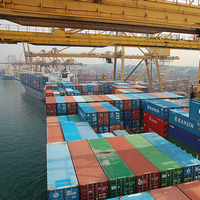COLOMBO, Sri Lanka -- On a steamy afternoon in the Sri Lankan capital, if you glance across the water at Colombo's legendary Galle Face Green seaside promenade, past the spray of the Indian Ocean, you can make out a milky line of giant cargo ships at the point where the sky blends with the sea. That ocean traffic on the horizon, those dashes of gray steel, glide along the world's busiest sea lane, navigated by anywhere from 100 to 200 ships every day. This is the maritime pipeline that makes it possible for China to remain the world's fastest-growing economy. It is also the visible explanation for China's generosity toward Sri Lanka and a centerpiece of this country's vision for the future.
Sri Lanka, the small tear-shaped island at the foot of India, has always held a special place in the hearts of global strategists. In earlier centuries, Portuguese, Dutch, and British colonial invaders sought to exploit its riches, but they also coveted the island for its location. Now, in what may become the Chinese Century, it is Beijing that has its sights on the country formerly known as Ceylon.
China's interest has been warmly reciprocated by Sri Lankan authorities, who see Beijing's embrace as the key to prosperity at a time when the West demands pesky human rights standards in exchange for its largesse.

